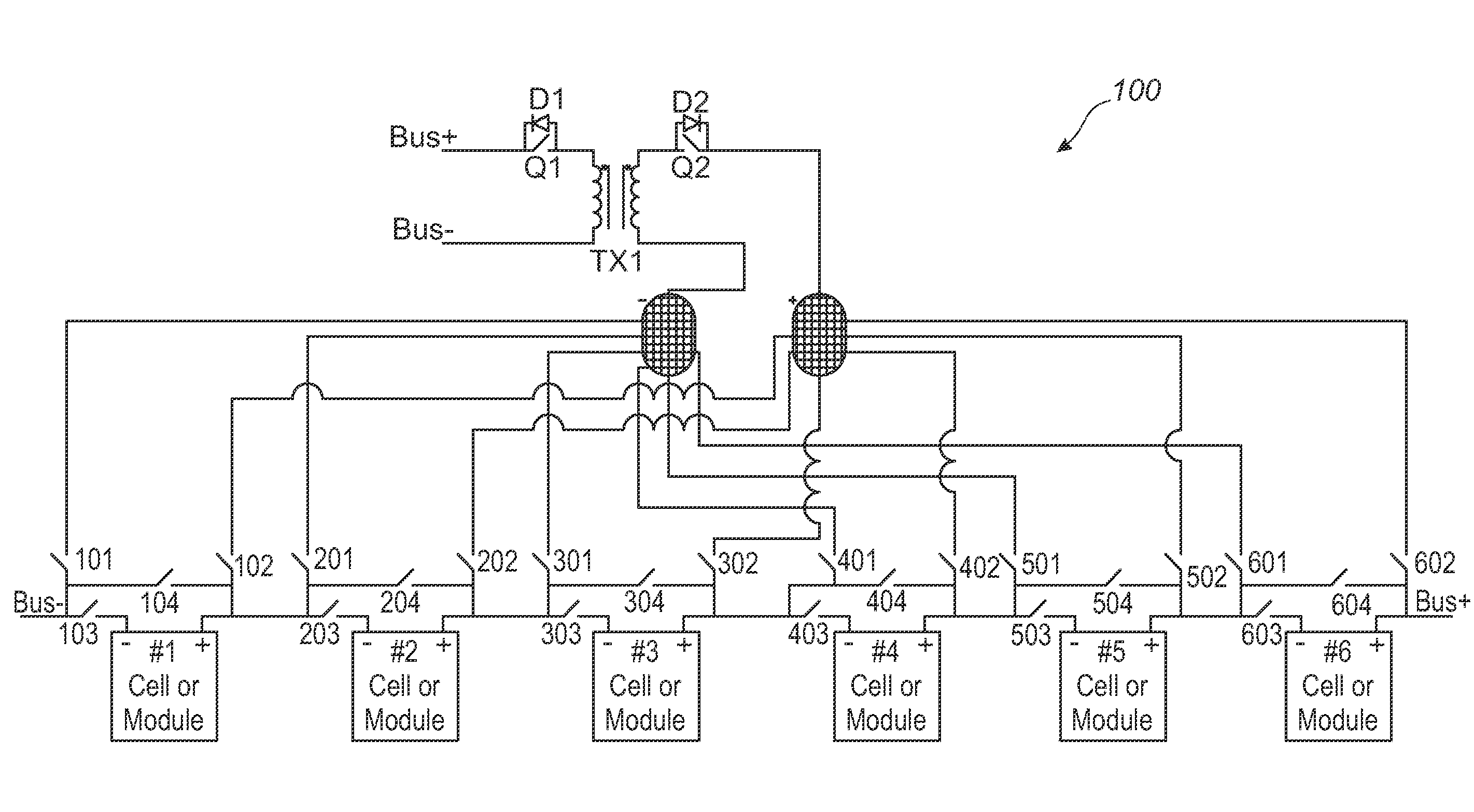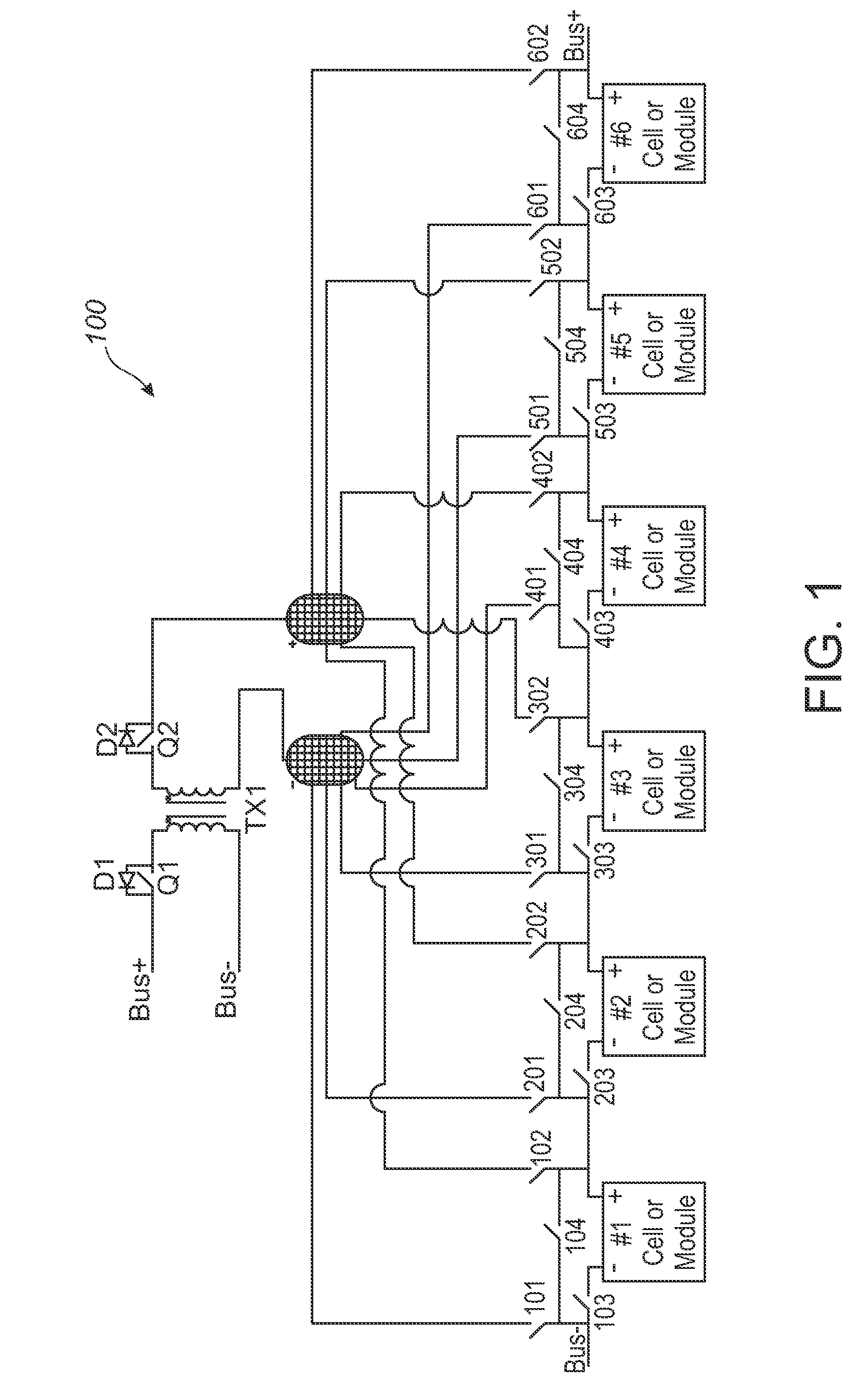Cell management system
a cell management and cell technology, applied in the field of cell management systems, can solve the problems of increasing the chances that another cell will reach its limit, affecting the efficiency of balancing, etc., and achieves the effects of small time, precise measurement, and less efficient balancing
- Summary
- Abstract
- Description
- Claims
- Application Information
AI Technical Summary
Benefits of technology
Problems solved by technology
Method used
Image
Examples
Embodiment Construction
[0043]The exemplary embodiments of the present invention described below are not intended to be exhaustive or to limit the invention to the precise forms disclosed in the following detailed description. Rather, the embodiments are chosen and described so that others skilled in the art may appreciate and understand the principles and practices of the present invention.
[0044]An example of the value of a cell management system would be in the design of a Lithium-ion (Li-ion) battery. The manufacturing process of Li-ion battery cells leads to variations that correlate to potentially unbalanced cells if unmanaged. Without voltage balancing, the cells in a Li-ion battery will become out of balance, with one or more cells in the series above or below the average cell voltage of the battery. Without a balancing system, as the battery cells are charged and discharged in a series, the difference in voltage grows until such a time that the voltage difference becomes critical and the battery ma...
PUM
 Login to View More
Login to View More Abstract
Description
Claims
Application Information
 Login to View More
Login to View More - R&D
- Intellectual Property
- Life Sciences
- Materials
- Tech Scout
- Unparalleled Data Quality
- Higher Quality Content
- 60% Fewer Hallucinations
Browse by: Latest US Patents, China's latest patents, Technical Efficacy Thesaurus, Application Domain, Technology Topic, Popular Technical Reports.
© 2025 PatSnap. All rights reserved.Legal|Privacy policy|Modern Slavery Act Transparency Statement|Sitemap|About US| Contact US: help@patsnap.com



